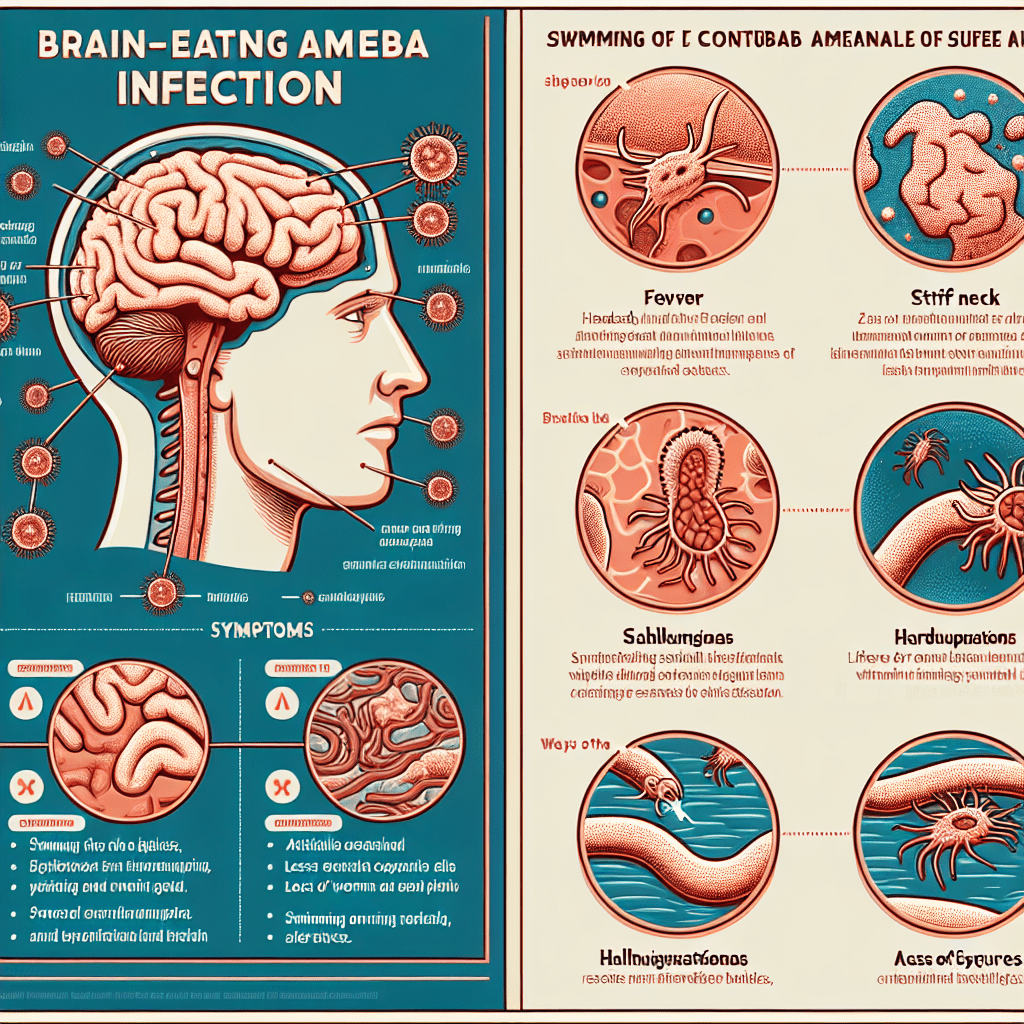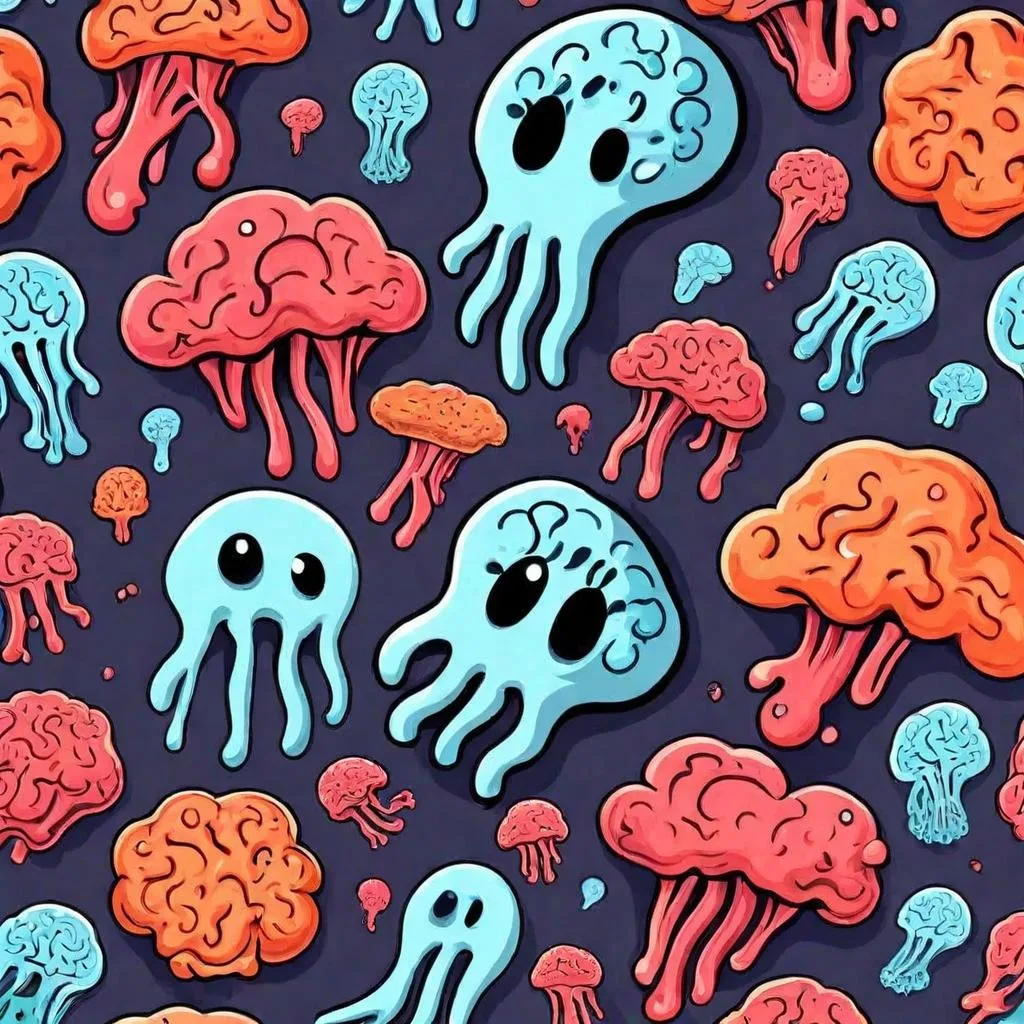-
Table of Contents
Introduction
A brain-eating amoeba, scientifically known as Naegleria fowleri, is a rare but extremely dangerous organism that can cause a severe and often fatal infection in the brain. It is important to be aware of the signs and symptoms associated with this infection in order to seek immediate medical attention if necessary.
Symptoms and Signs of Brain Eating Amoeba Infection
How do you know if you have a Brain eating Amoeba? This is a question that may arise if you are concerned about the possibility of being infected with this rare but deadly organism. While brain eating amoebas are extremely rare, it is important to be aware of the symptoms and signs of infection in order to seek prompt medical attention if necessary.
One of the most common symptoms of a brainhttps://blog.medihertz.com/brain-tumor-in-horses-symptoms/ eating amoeba infection is a severe headache. This headache is often described as being different from a typical headache, with a sharp or stabbing pain that may worsen over time. It is important to note that a headache alone does not necessarily indicate an infection, as there are many other causes for headaches. However, if you experience a severe headache that is accompanied by other symptoms, it is important to seek medical attention.
Another symptom of a brain eating amoeba infection is a high fever. This fever is often accompanied by other flu-like symptoms such as nausea, vomiting, and a stiff neck. These symptoms can be quite alarming, as they are similar to those of other serious infections such as meningitis. If you experience these symptoms, it is important to seek medical attention immediately.
In addition to headaches and fever, a brain eating amoeba infection can also cause changes in mental status. This may include confusion, disorientation, and difficulty concentrating. These changes can be subtle at first, but may progress rapidly if left untreated. If you or someone you know experiences these symptoms, it is important to seek medical attention as soon as possible.
It is also worth noting that a brain eating amoeba infection can cause seizures. Seizures are sudden, uncontrolled movements or convulsions that can be quite frightening. If you experience a seizure, it is important to seek medical attention immediately, as this can be a sign of a serious underlying condition.
While these symptoms and signs can be indicative of a brain eating amoeba infection, it is important to remember that they are also associated with many other conditions. It is always best to consult with a healthcare professional for an accurate diagnosis. If you are concerned about the possibility of a brain eating amoeba infection, it is important to provide your healthcare provider with a detailed medical history and any relevant travel information.
While brain eating amoebas are extremely rare, it is important to be aware of the symptoms and signs of infection. These may include severe headaches, high fever, changes in mental status, and seizures. If you experience any of these symptoms, it is important to seek medical attention immediately. Remember, early detection and treatment can greatly improve the chances of a positive outcome.
Diagnosis and Testing for Brain Eating Amoeba

The symptoms of PAM can be similar to those of other common illnesses, making it challenging to diagnose. In the early stages, symptoms may include headache, fever, nausea, and vomiting. These symptoms can easily be mistaken for the flu or other viral infections. However, as the infection progresses, more severe symptoms may develop, such as stiff neck, seizures, confusion, hallucinations, and coma. If you experience any of these symptoms, especially after recent exposure to freshwater sources, it is essential to inform your healthcare provider immediately.
Diagnosing a brain eating amoeba infection can be challenging due to its rarity and the similarity of symptoms to other conditions. However, several tests can help confirm the presence of the amoeba. The most common diagnostic test is a cerebrospinal fluid (CSF) analysis. In this test, a sample of the fluid surrounding the brain and spinal cord is collected through a lumbar puncture. The CSF is then examined under a microscope to look for the presence of the amoeba. Additionally, a polymerase chain reaction (PCR) test can be performed on the CSF sample to detect the genetic material of the amoeba.
Another diagnostic tool that can be used is brain imaging, such as a computed tomography (CT) scan or magnetic resonance imaging (MRI). These imaging tests can help identify any abnormalities in the brain that may be caused by the amoeba infection. However, it is important to note that these imaging findings are not specific to brain eating amoebas and can be seen in other conditions as well.
In some cases, a brain biopsy may be necessary to confirm the presence of the amoeba. This procedure involves removing a small piece of brain tissue for examination under a microscope. However, brain biopsies are invasive and carry risks, so they are typically reserved for cases where other diagnostic tests have been inconclusive.
It is crucial to remember that early diagnosis and treatment are essential in improving the chances of survival from a brain eating amoeba infection. If you suspect you may have been exposed to the amoeba and are experiencing symptoms, do not hesitate to seek medical attention. Your healthcare provider will be able to evaluate your symptoms, perform the necessary tests, and provide appropriate treatment if needed.
Prevention and Treatment of Brain Eating Amoeba Infection
Brain eating amoeba, also known as Naegleria fowleri, is a rare but deadly infection that affects the brain. It is caused by an amoeba that enters the body through the nose and travels to the brain, where it causes severe damage. While the infection is extremely rare, it is important to know the signs and symptoms, as well as the prevention and treatment options available.
Prevention is key when it comes to brain eating amoeba infection. The amoeba is commonly found in warm freshwater environments such as lakes, hot springs, and poorly maintained swimming pools. To reduce your risk of infection, it is important to avoid swimming in warm freshwater areas, especially if the water is stagnant or has a high temperature. Additionally, it is important to avoid activities that may force water up your nose, such as diving or jumping into water.
If you do choose to swim in warm freshwater areas, there are precautions you can take to reduce your risk of infection. Using nose clips or holding your nose shut while swimming can prevent the amoeba from entering your body through your nose. It is also important to avoid stirring up sediment in the water, as this can increase the likelihood of coming into contact with the amoeba.
If you suspect that you may have been exposed to the brain eating amoeba, it is important to seek medical attention immediately. The symptoms of infection typically appear within one to nine days after exposure and can include severe headache, fever, nausea, vomiting, stiff neck, and seizures. These symptoms can progress rapidly, leading to confusion, hallucinations, and coma.
Diagnosing a brain eating amoeba infection can be challenging, as the symptoms are similar to those of other neurological conditions. However, a healthcare professional may perform a spinal tap to collect cerebrospinal fluid for testing. This can help confirm the presence of the amoeba and guide treatment decisions.
Treatment for brain eating amoeba infection is difficult, as the infection is often fatal. However, early diagnosis and aggressive treatment can improve the chances of survival. Antifungal medications, such as amphotericin B, are typically used to treat the infection. In some cases, other medications, such as miltefosine or fluconazole, may be used in combination with antifungal drugs.
In addition to medication, supportive care is also important in the treatment of brain eating amoeba infection. This may include measures to reduce brain swelling, control seizures, and maintain hydration and nutrition. In severe cases, a ventilator may be necessary to help with breathing.
While brain eating amoeba infection is rare, it is important to be aware of the risks and take precautions to prevent infection. Avoiding warm freshwater areas and using nose clips or holding your nose shut while swimming can greatly reduce your risk. If you suspect that you may have been exposed to the amoeba, seek medical attention immediately. Early diagnosis and aggressive treatment can improve the chances of survival.
Conclusion
If you experience symptoms such as severe headache, fever, nausea, vomiting, stiff neck, confusion, seizures, or hallucinations after swimming in warm freshwater lakes, rivers, or hot springs, it is important to seek immediate medical attention as these could be signs of a brain-eating amoeba infection.

